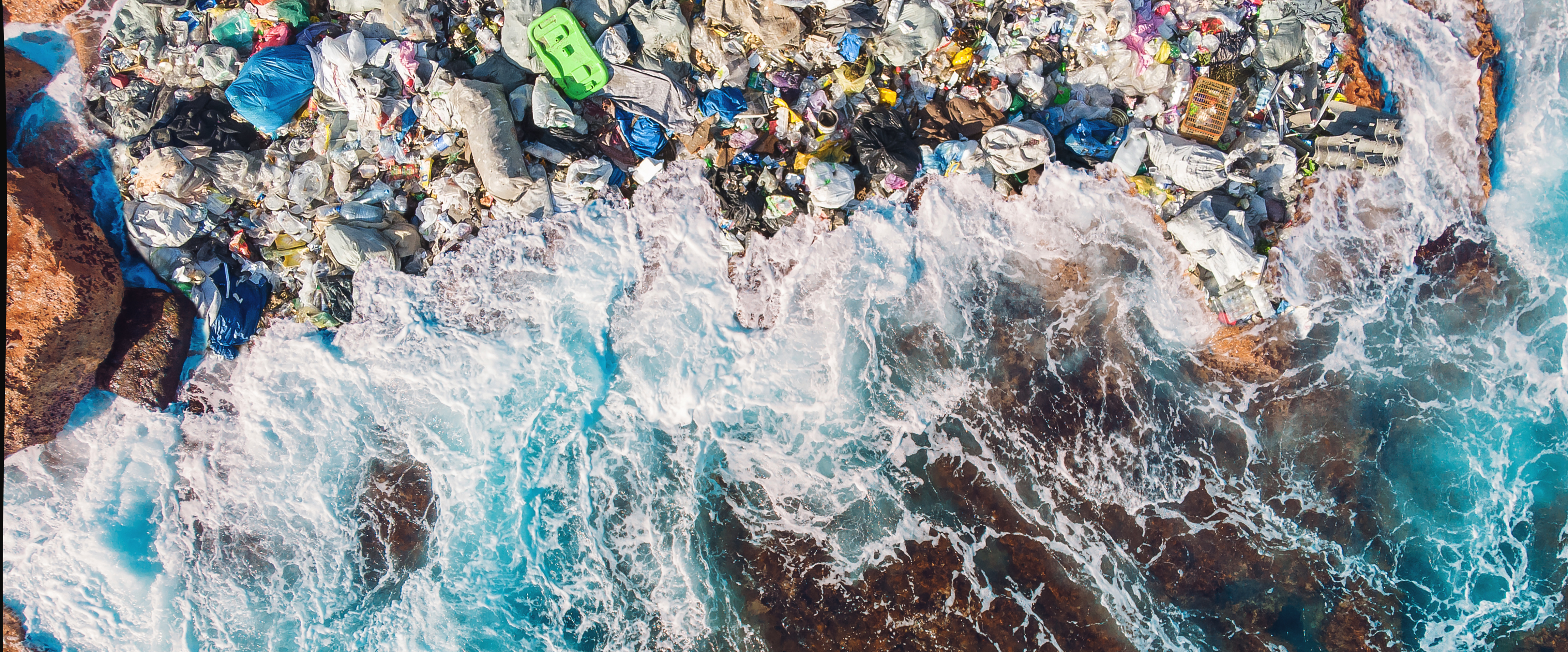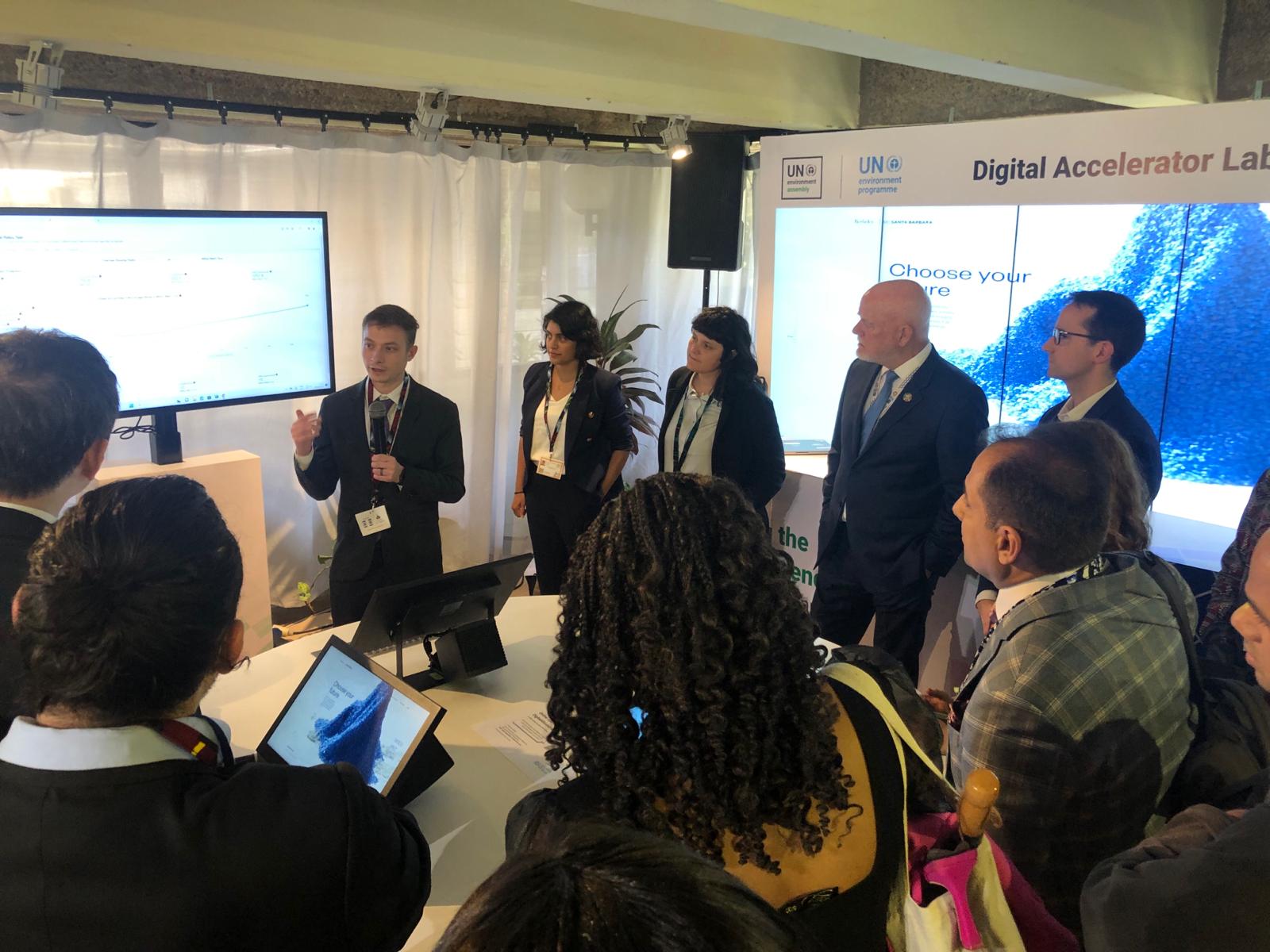
A Critical Juncture for Ending Plastic Pollution
Our Team’s New Paper Published in Science Today Offers a Suite of Solutions for Policymakers
Today, we’re thrilled to announce the release of our paper in Science: Pathways to reduce global plastic waste mismanagement and greenhouse gas emissions by 2050. This paper distills over a year's work from our team with the ultimate goal to inform and inspire decision-makers on the global stage during the UN Plastics Treaty process. As we approach the final negotiation session (INC-5) in Busan, South Korea later this month, the findings from our paper indicate that ending plastic pollution—the Treaty’s stated goal—is achievable, but only with ambitious, coordinated global efforts.
Making Waves: a Team Effort to Drive Global Change

Over the past year the DSE team (Sam Pottinger, Ciera Martinez, Magali de Bruyn, Carl Boettiger, and Douglas McCauley) alongside academic leaders in plastic pollution (Roland Geyer and Nivedita Biyani) and our partners at the Benioff Ocean Science Lab developed a cutting-edge model that predicts the global production, use, and fate of plastics through 2050. Our model analyzes the impact of eight specific policy interventions on plastic waste and greenhouse gas emissions, both individually and when combined. This research forms the backbone of our interactive tool, The Global Plastics AI Policy Tool, providing an evidence-based, AI-powered projection of the future under various policy scenarios.
The results are clear: without action, plastic waste is projected to reach 120.9 metric million tons in 2050. This outcome is modeled in our Interactive Data Visualization and below, with the projections piled on top of Manhattan for scale:

But there’s hope. Our findings demonstrate that with ambitious coordination, we can approach the Treaty’s goal to end plastic pollution. Our model reveals that a package of four key policies—working together across the entire plastic lifecycle—could nearly end plastic pollution by reducing mismanaged plastic waste by up to 91% and cutting associated greenhouse gasses by a third by 2050. Ultimately, we hope to see the US support a high-ambition treaty in order to meet these goals.
Human-Centered Data Science at DSE
At DSE we employ human centered design principles to ensure our research is accessible and useful to those who need it. For example, at the start of this project we incorporated feedback from stakeholders on how our work could be useful in the upcoming treaty negotiations. We also showcased our model in person at treaty negotiations for INC-3 and at the UNEP Programme meeting in Nairobi, Kenya to collect feedback from attendees. We also attended INC-4 in Ottawa and held side events, participated in panels, and coordinated with other scientists and modeling efforts to compare and contrast policy considerations.

To date we've engaged with dozens of representatives from a diverse set of countries and incorporated their invaluable perspectives into our research and tool design. Through this refinement process we created a suite of ways to understand the complexities of decisions needed to make a difference in the efforts to end global plastic pollution. Underlying our work on plastic pollution and in addressing other environmental challenges is a commitment to making environmental data science open and accessible by policymakers, journalists, and researchers alike.
Looking Ahead: Inspiring Change and Supporting the Treaty’s Future
With the release of our article, our now peer-reviewed research and software stands ready to be a powerful tool at INC-5, helping drive this final Treaty negotiation forward. This project exemplifies our DSE process where we remain dedicated to transparent, science-driven solutions that ensure lasting impacts for our world health, including combating plastic pollution. Our team’s vision is a world free of plastic pollution, and our work is a testament to what's possible when we make data science open and transparent to help drive environmental action.
Media Coverage
To date our research and Science paper have been featured in over 600 US and international news articles. This total includes reposts of an article across multiple news outlets. Below are the 20 most notable stories.
US
- ABC7 News: Local Bay Area Broadcast | November 14 2023
- The Associated Press: In South Korea, nations meet in final round to address global plastic crisis | November 25, 2024 (this story was picked up over 400 times)
- Fast Company: The UN is holding its 5th meeting on the global plastic crisis. Can negotiators finally make a treaty happen? | November 25, 2024
- Grist: On the agenda this Earth Day: A global treaty to end plastic pollution | April 24 2024
- The Hill: California scientists unveil policy blueprint for stopping global plastic pileup in its tracks | November 14, 2024
- National Public Radio (NPR): Plastic waste is everywhere. Countries have one more chance to agree on a solution | November 25, 2024 (this story was reposted by over 130 news outlets)
- National Public Radio (NPR): Talks for a plastic pollution treaty are stalling. Could the U.S. be doing more? | April 23 2024
- NBC Bay Area: Plastic pollution causing a sea of trouble | November 26, 2024
- Newsweek: Talks on a Plastics Treaty Have Begun. Here's How to Stop Plastic Waste | November 27, 2024.
- Newsweek: As Plastic Treaty Talks Near, Study Shows How to Cut Waste Clogging Oceans November 14 2024.
- The New York Times: The World Seeks an End to Plastic Pollution at Talks in South Korea | November 24, 2024
- TIME: Countries May Be Getting One Step Closer To Actually Tackling Plastic Pollution | November 15 2023.
- The Washington Post: How to end plastic pollution on Earth for good | November 27 2023.
Global
- Agencia Efe (Spain): La basura plástica mal gestionada se duplicará en 2050 pero aún hay tiempo de evitarlo | Nov 14, 2024
- CBC Radio (Canada): There’s a fix for our plastic problem | December 7, 2024
- Guardian (UK): Global plastic production must be cut to curb pollution, study says | November 14, 2024
- La Vanguardia (Spain): El 91% de los plásticos se eliminarían con cuatro políticas en un nuevo tratado mundial | November 14
- Liberation (France): Plastique : réduire de plus de 90 % le volume de déchets d’ici à 2050, c’est possible, affirme une étude | November 14
- Press Trust of India: Plastic waste could double by 2050, researchers find, suggest policies to address issue | November 15
- Radio New Zealand: Global plastic waste likely to double by 2050 - study | November 15
Links
- Read our Science paper: Pathways to reduce global plastic waste mismanagement and greenhouse gas emissions by 2050
- Explore our Global Plastics AI Policy Tool and Interactive Data Visualization
- Learn more about this work on our project page
- Read UC Santa Barbara's press release announcing the Science paper

